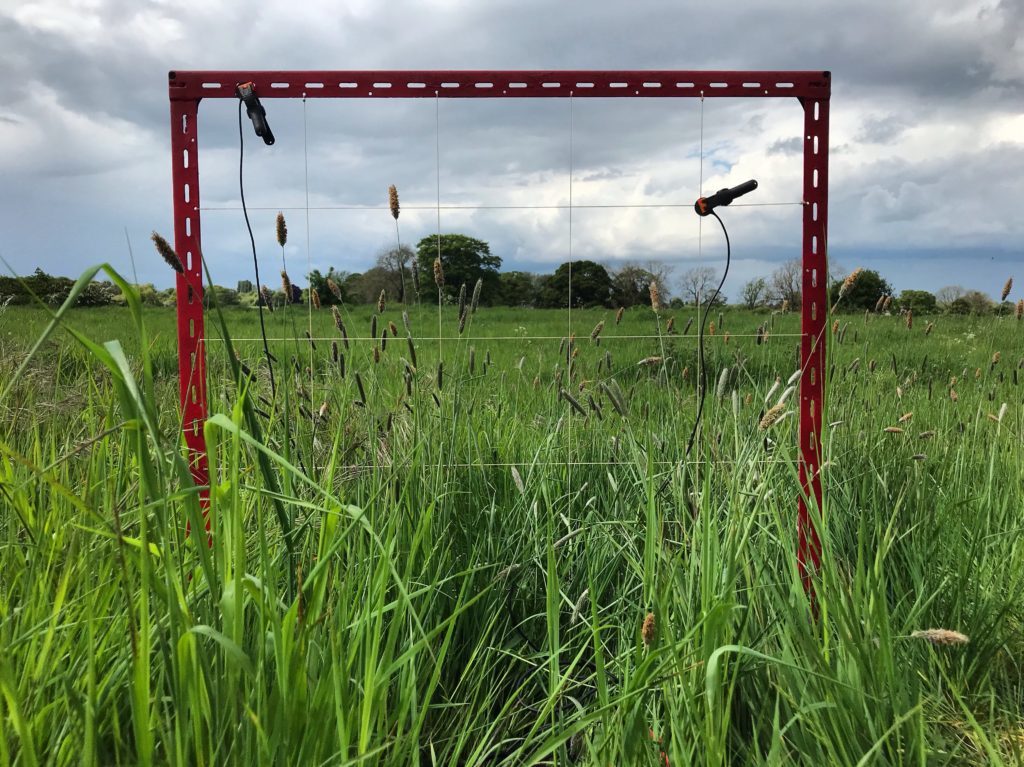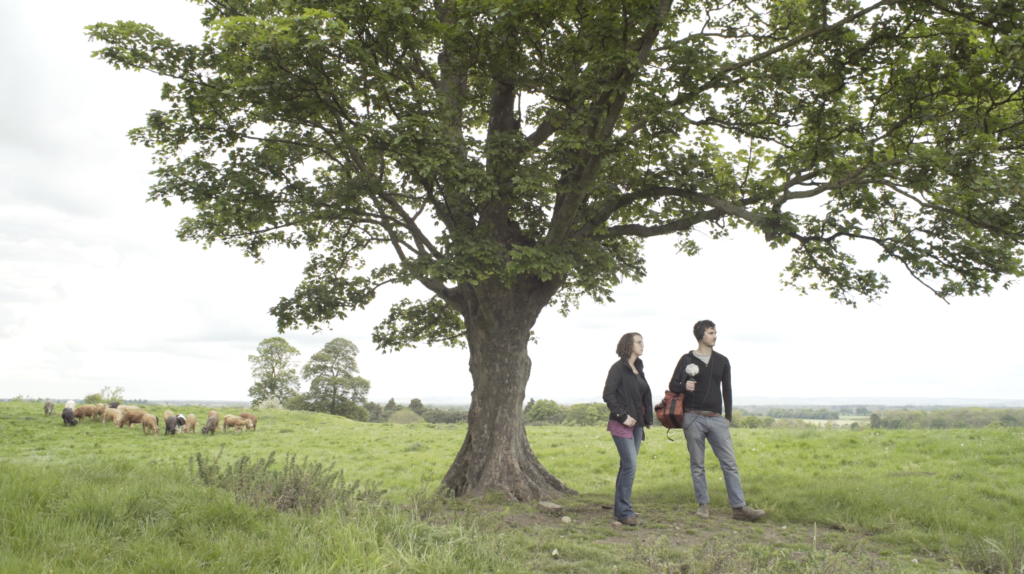Rob St. John introduces Soundmarks, his new North Yorkshire-centric collaboration with archaeologist and artist Dr. Rose Ferraby.

Our collaboration began last month, as Rose, along with her colleagues and volunteers at the Aldborough Roman Town Project undertook a 5-week long archeological excavation. This was my first time observing and participating in an archeological dig. I spent most of my time pottering about the trench edge watching people work, observing the patient, skilled processes of excavation and categorisation going on. There is a sense of educated guessing in the dig: what is this fragment of material, and how does it relate to others? What story are we piecing together? To my (uneducated) eye, this seemed a process of sifting and sorting material in various tones of grey: a subtle miracle of skilled detective work.
The slow, collective work of excavation takes place on a very small patch of opened ground beside a hawthorn hedge, which hummed with bird and insect life in the heady May sunshine. Magnetometry of the wider landscape shows a rich set of buried Roman structures: temples, a forum, funerary monuments, warehouses, a basilica, an amphitheatre. But the minute intensity of attention and effort required for a dig means that all that is opened is a small patch of ground in a field to the north of the village centre. Within a foot or so, finds begin to emerge: time variously compressed and stretched in the historical soil record. How tempting it must be to imagine excavating a little further, a little wider. What would be turned up if digs could be opened all through the town?
In many ways, this is why Rose initially proposed our Soundmarks collaboration: there are a wealth of stories hidden beneath Aldborough’s streets, fields and buildings, and we’re attempting to narrate some of them through creative techniques. We have chosen eight provisional sites through the town as the basis of an ‘art trail’. Visitors will be able to follow this trail, hearing audio explanations of the historical landscapes, alongside soundworks created based on the characteristics of each site, and Rose’s visual art. The idea is that the interactive trail will encourage people to explore Aldborough in new ways, and open up awareness of the rich landscape which lies only inches below our feet in the village.
So far, I have been largely been making a nuisance of myself on the dig – asking endless questions about archaeological practices, theories and ‘ways of knowing’ the landscape. Numerous potentially fruitful themes for working with sound have already begun to emerge. Archaeologists detect buried structures based on changes to sub-surface magnetic fields. A site with numerous human traces – particularly those where materials have been burnt or forged – are known as magnetically ‘noisy’. On the other hand, sparser sites with fewer traces of human activity are magnetically ‘quiet’. I am thinking about how using magnetic reel-to-reel tape as a way of recording, looping, and environmentally-altering sound for the project might resonate with these magnetically ‘noisy’ and ‘quiet’ landscapes.
I’ve also noticed how archaeologists sometimes talk in very sensory terms about the material they are digging: how ‘sharp’ or ‘soft’ a substrate might sound or feel to dig. Again, there is a real sense of well-practiced skill here, as layers of time are excavated, whether with a small trowel or heavy mattock, and subtle changes in the tactility or sound of the substrate can be significant. I wonder, in (re)composing sound from the site: how might I represent depth, texture and grain? Can archeological representations of the sub-surface act as guides for creating new sound works? In other words, how might we begin scoring the sub-surface landscape at Aldborough?
I recorded sound throughout the village during the dig, using my usual ‘toolkit’ of stereo, contact and binaural microphones and underwater hydrophones. For this project we’re also experimenting with microphones which can detect electromagnetic fields (a theme is developing here…) and pick up bat calls. Rose has been making a podcast from the trench (which you can hear here), and has been recording lots of soundscapes from the local area. From my perspective, this is great: not only have we already created a collaborative sound ‘archive’ of the village; but also Rose’s recordings reflect the ‘ears’ of someone at the centre of the dig’s daily practice.

Together, one evening, we experimented with clipping contact microphones – which pick up vibrations through different materials – to various items in the on-site finds tent. I was keen to let Rose take the lead in this process, hearing how the objects used in daily archaeological practices – spades, trowels, mattocks, soil sieves, a metal planning frame – and some of the materials associated with the dig – soil, tarpaulin, rocks, pottery, bone – might be ‘sounded’ in this way. It was fascinating to watch Rose experiment with variously tapping, hitting, brushing and plucking these ‘instruments of use’ – particularly as I didn’t have any headphones to hear the micro-sound worlds she was conjuring! The slow intensity of this experimenting with sound – where minute changes in how and where a material is touched – reminded me of the attentive practices that went on in the trench each day. There’s now a long old set of clangs, thumps, rumbles and drones for me to sift and sort through in beginning to make compositions for the work.
Finally, a quick word on the project title. The ‘soundmark’ is a term proposed by the Canadian acoustic ecologist and composer R. Murray Schafer in the late 1970s. Schafer was interested in finding ways of documenting the world’s soundscapes, and celebrating their local distinctiveness in an era when concerns over noise pollution were growing. In Schafer’s terms, the soundmark is an aural equivalent to the visual landmark: it represents the defining and distinctive sonic characteristics of a particular place.
We might now think about Schafer’s idea of the soundmark as being overly concerned with ‘good’ and ‘bad’ sounds – leaving little room for flux and change in how a place is composed. But as a term, it seemed to make sense for this project, given that we are working on collaborative processes of creative mapping through sound and mark-making (through Rose’s drawings and paintings). In our project, though, the ‘soundmarks’ created through Aldborough will muddle any fixed notions of time and space, stretching back hundreds of years to resonate with past lives hidden under the topsoil.
*
This piece originally appeared on the Soundmarks blog, where you can keep tabs on the project going forwards.
Soundmarks is supported by an Arts Council National Lottery Project Grant.